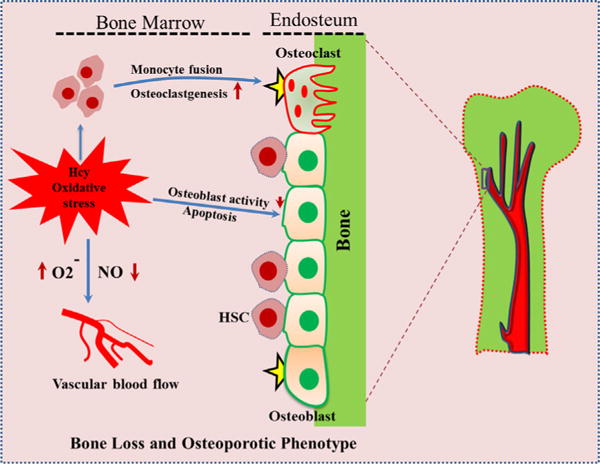Fig. 2.

Mechanism of homocysteine that contribute to the development of osteoporosis. Homocysteine level is associated with increased oxidative stress in bone microenvironment. Increased reactive oxygen species (ROS) induces osteoblast apoptosis thereby decreasing osteoblastgenesis. This increase in oxidative stress further reduces NO bioavailability, by producing superoxide anions ( ), which could also decrease bone blood flow and possibly angiogenesis. The ROS generated by this process activates osteoclastgenesis, by monocyte fusion, further contributing to loss in bone density; leading to osteoporosis.
